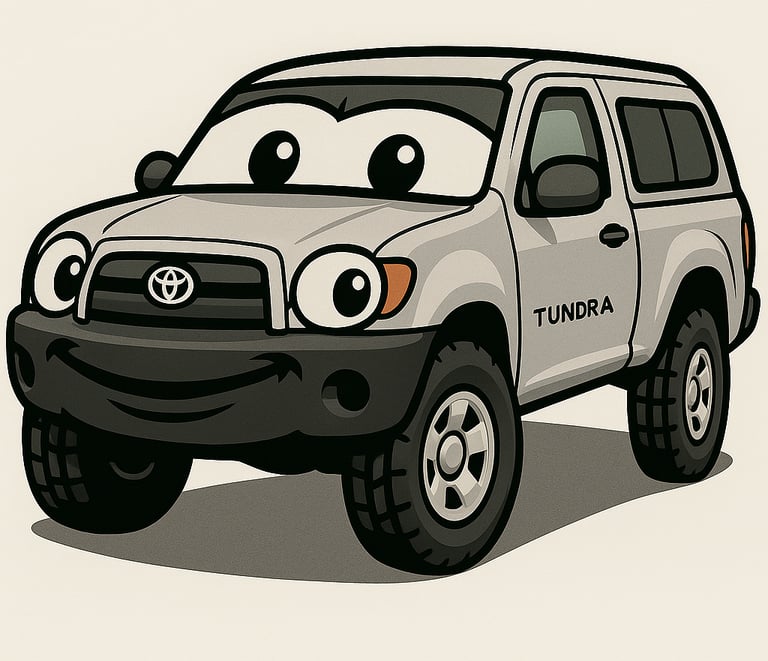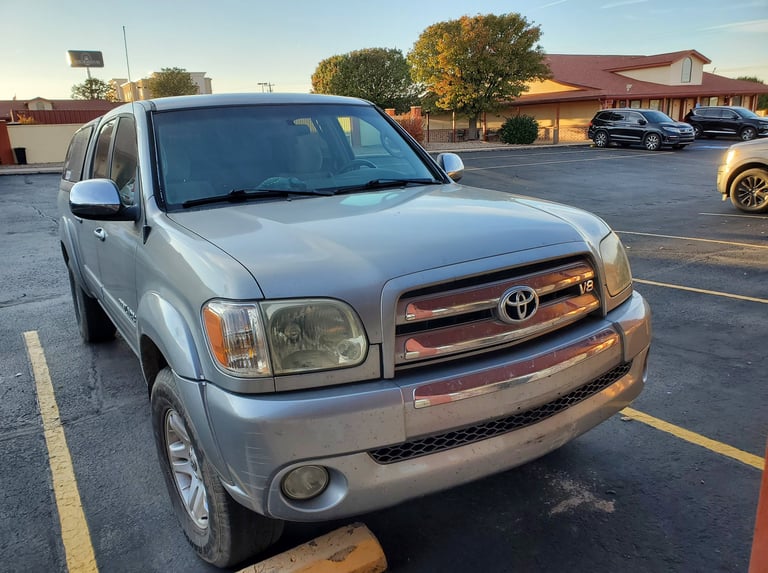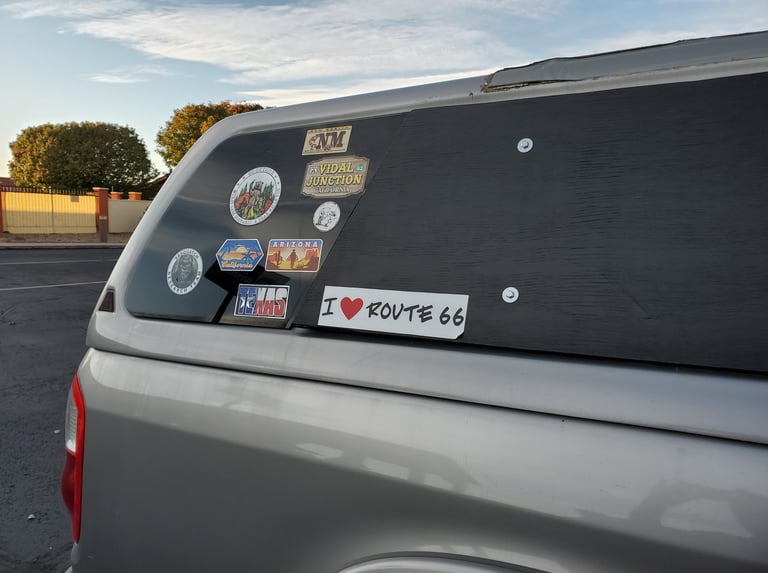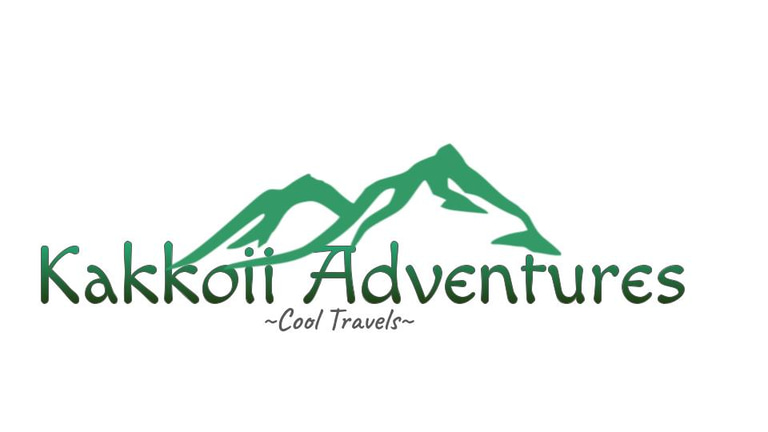What's Stopping You? Change Your Life!
Steel, Sunlight and 260,000 Miles
And Tundra Makes Three
WILLIAM
11/7/20254 min read


When Mary and I drive the highways of America, our truck hums like an old friend, and our cats, Midnight and Iori, nap through the miles. We used to bring our doggo, Juno, too, but she’s since retired to a walnut farm—a gentler life after years of travel. We pack the usual road gear: cameras, laptops, microphones, sunscreen. The essentials. And one thing that never changes is the truck—our 2006 Toyota Tundra.
We hadn’t meant to buy it. The Tundra came into our lives by accident, or maybe by fate. Back then, we were driving a 1999 Ford F-250 that had seen better decades—rattling, stained, and carrying a smell I couldn’t quite place. One morning, I told Mary we were going truck shopping. We needed something smaller, easier to park, better on gas. Horses, goats, and chickens filled our days; feed and fencing filled the bed. The Ford had done its time.
At first, we wanted a Toyota Tacoma. Compact, efficient, sensible. But by noon that day, we’d bought a Tundra instead—a decision made on a whim between morning coffee and an anime convention in Roseville. The dealer was known for its used trucks, and one caught our eye right away: a silver four-door with quiet confidence, sitting in the sunlight like it was waiting for us. We took it for a short drive, signed the papers, and by anime time, it was ours.
We thought we were just buying transportation. Looking back, it feels like we adopted a companion we didn’t know we’d need for the next chapter of our lives.
Built in an era when trucks were still more steel than software (we aren’t big on the dash touchpad thingies), the Tundra has the kind of reliability that inspires loyalty. It’s clocked over 260,000 miles now—each one a story. It starts every time. It doesn’t complain. It’s carried us through grocery runs, workdays, and long, open-road wanderings where the plains unroll like film through a projector.
It sounds corny, but it really has become a friend.
The 2006 model was the last of the first-generation Tundras, built in Princeton, Indiana, just before production moved to San Antonio, Texas. American hands, Japanese precision—a bridge between two worlds. Ours has the 4.7-liter V8, borrowed from the Land Cruiser, famous for running forever. The styling is modest, the ride steady, the engine still purring like it did at 60,000 miles.
It’s a truck that doesn’t quit. And maybe that’s why we’ve never been able to replace it.
For most of its life, our Tundra was a background player—the third car, the utility rig. Reliable, but always overlooked. I used it for errands, hauling, and weekend projects, then parked it while newer vehicles took the spotlight.
But two years ago, as retirement began to take shape, we decided to give the old truck a second act. We replaced nearly everything that mattered: new tires, brakes, suspension, and transmission service—the kind of care a good tool deserves before it’s sent back into duty. Then we hit the road, tracing long ribbons of Interstate 40 between Oklahoma and California, watching the odometer climb another 20,000 miles.
Somewhere near Gallup, the air smelled like rain and warm dust, and the Tundra’s dash glowed faintly under a late-afternoon sun. The radio faded to static, the horizon stretched wide and endless, and I realized this truck had quietly become part of our story in a way I hadn’t expected.
It’s funny how travel changes your relationship with a machine. You stop thinking of it as metal and start seeing it as memory. Every rest stop feels like a small reunion. Every sunrise over the highway feels earned.
It simply goes. Keeps going. A quiet reminder that not everything built in 2006 needs replacing in 2025.
Now, twenty years after it rolled off the line in Indiana, we’re talking about what comes next. Maybe a Class B or C RV—a self-contained little world with a kitchen and shower. Or maybe we’ll strip things down, buy a van, toss in a mattress and coffee pot, and travel light.
Then again, maybe the answer is already sitting in the driveway. Another first-generation Tundra, perhaps—a twin built from the same steel and philosophy.
Each option tempts in its own way: the RV for comfort, the van for simplicity, the Tundra for trust. Freedom comes in many forms—sometimes it’s the low hum of a diesel engine beneath desert stars, and sometimes it’s just an honest V8 waiting patiently to go wherever you point it.
We haven’t decided yet, and that’s okay. It’s a good kind of indecision—the kind that means the journey’s still unfolding.
Maybe we’ll just keep rebuilding this one until it earns its place in a museum. If it makes it to 400,000 miles—and I suspect it will—it won’t surprise me.
It’ll just confirm what these old Toyotas have been telling us all along:
machines don’t have to die young if they’re built with care and kept with respect.
Maybe the same could be said of travelers.
If You Go
Route: Interstate 40 between Oklahoma and California offers some of the most scenic long-haul drives in the country.
Stops worth making: Tucumcari, NM (for vintage Route 66 motels); Flagstaff, AZ (for mountain air and coffee with a view); and the Mojave rest areas, where silence is its own reward.
Tip: Whether you’re in a new RV or an old Tundra, keep a thermos of coffee, a good playlist, and enough time to pull over when the horizon asks you to.




